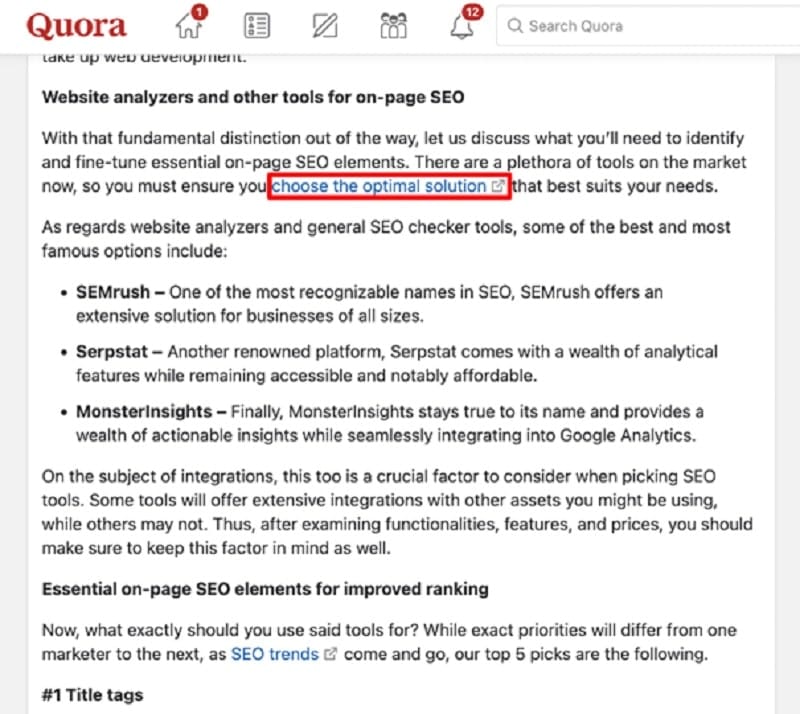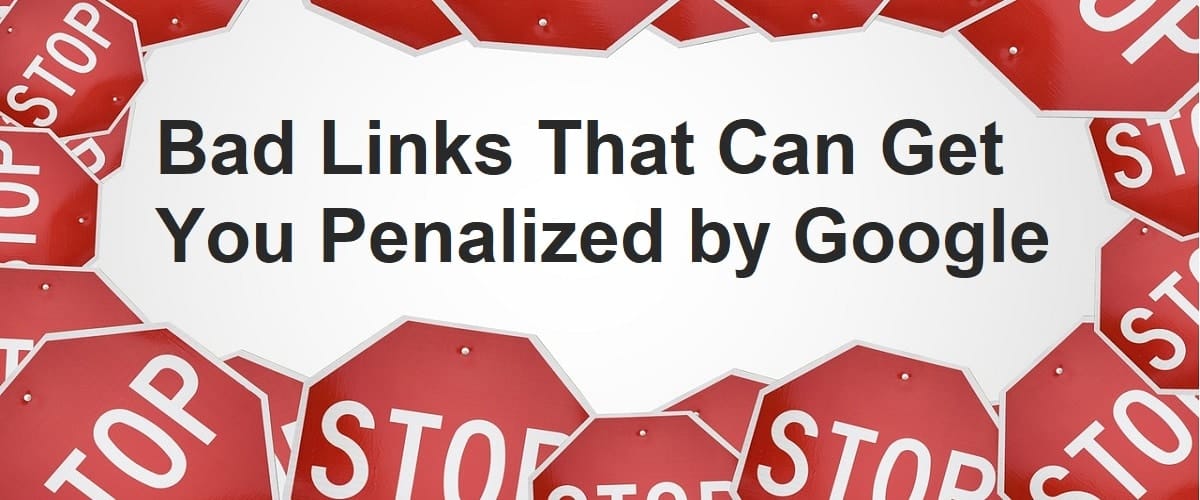Did you know there are lots of bad links out there that can get your website in trouble? Any SEO pro will tell you that awesome links and top-notch content are super important for SEO success.
Let’s examine what makes a bad link bad and which ones you should avoid to keep your website penalty-free.
What are bad links?
Bad links are the ones that break Google’s spam rules. Basically, if links are trying to mess with Google Search rankings on purpose, Google might call them link spam.
There are two main types of bad links to watch out for:
- The spammy ones that just waste your time.
- The risky ones that could actually harm your site.
Why are bad links a problem?
Bad links can cause some serious headaches. They can lead to a Google penalty, which means your rankings could take a nosedive, and your organic traffic might drop off a cliff. In the worst-case scenario, your site could vanish from search results completely!
Even if you dodge a Google penalty, bad links can still be a total waste of time and money. Many of them will not improve your rankings or bring in more visitors, so it’s best to steer clear of them!
9 Types of Bad Links You Should Avoid
1. Press Release backlinks
Remember when press release links were all the rage about a decade ago? Well, times have changed, and these links just aren’t cutting it anymore. There are way more advanced linking strategies out there now.
Getting press release links was easy back in the day, which is why so many websites jumped on that bandwagon. But then they had to hit the brakes and switch gears to keep up with the new rules of link-building.
Like any SEO trick that works too well, folks started going overboard with press release links. Google’s not a fan nowadays because they’re super easy to game.
So, if you find yourself in a spot where you’ve got to include a link in your press release, go for a plain old URL as your anchor text. And try to stick to just one link from the contact section of the press release. That’s the smart move!
2. Forum backlinks
Before we dive in, let’s get one thing straight – not all forum links are troublemakers. If you’ve got a link from a solid, reputable forum, and it’s not spammy or sneaky, then you’re golden; keep that link!
The problem pops up when your site is swamped with tons of forum links from overseas discussion boards. These are usually low-quality and packed with spam. You’ll want to say goodbye to those links pronto by disavowing them.
So, always keep an eye on your incoming links, especially from forums. Some might be link spam that you don’t want hanging around.

Credit Image: Quora.com
3. Irrelevant backlinks
Everyone talks about the need for links from websites with high Domain Authority (DA) but not so much about how relevant those websites should be to your own. Imagine you run a tech company, and you get a link from a well-known skincare site. To Google, that might seem odd. While it may not hurt your rankings as much as other types of bad links, having too many unrelated links can make your link profile appear sketchy and forced. So, it’s best to steer clear of collecting these irrelevant backlinks.
4. Building Links Through Foreign Guestbooks
These kinds of links are pretty sneaky. You can add them yourself or use a program to do it for you on foreign guestbooks. But if you get too many, they might lower your rankings. If you’re ever unsure about a link, it’s better to just disavow it.
5. A Large Number of Random Nofollow backlinks
Trying to trick Google with just enough randomness in your link building so it won’t notice? Better think twice. It’s really hard to mix things up in a way that Google can’t spot. Especially if you’re using an automated tool, chances are Google will catch on to its pattern unless it’s completely random. And here’s a little tip: even just adding a Nofollow to your links leaves a trace. If you have thousands of no-followed links from all sorts of different websites, it’s like waving a big red flag that something spammy is happening.
6. Low-quality directory backlinks
Getting your links in well-known directories like YellowPages is awesome for local SEO. But watch out because tons of dodgy directory sites have shown up trying to sell links to brands that don’t know any better. You should stay away from those. When you’re looking for a directory link, go for the ones that lots of people use and trust.
Image Credit: Yellowpages.com
7. Sitewide links
An old trick for quickly getting thousands of backlinks was to use sitewide links. These usually pop up in footers, and because a footer shows up on every page of a website, you could end up with thousands of backlinks just like that. But these are often signs of spammy link-building tactics, so it’s a good idea to steer clear of them.
8. Private Blog Networks (PBNs)
PBNs, or Private Blog Networks, were once a solid strategy for building links and boosting rankings. You could mix things up, and everything would work out fine. You might even see big improvements from these methods. But those days are gone. If you use PBNs on a large scale, they can drag your site down, and you’ll lose organic traffic. Google has gotten good at finding and penalizing most PBNs. Some might slip through for a while, but sooner or later, Google will catch up with them.
9. No-Followed (& Do-Followed) Social Bookmarks
Google sees social bookmarking links as a bit sneaky. If you overdo it, you could land in hot water. Just think about it – they’re all placed by hand and can be super spammy. No surprise that Google views these as a link scheme.
When to Act?
Google is pretty good at spotting and ignoring link spam on its own, so you don’t have to stress about hunting down every bad link out there. Google’s disavow tool lets you tell them which links to ignore to avoid penalties. But be careful with this tool – if you don’t know what you’re doing, it can do more harm than good to your site. Don’t just disavow links left and right; you might accidentally get rid of ones that are actually helping your rankings. And remember, just because you think a link looks spammy doesn’t mean Google agrees.
Keep this in mind: there are only two times you should really worry about bad links:
- If Google has given your site a manual penalty for unnatural links.
- If you’re pretty sure a site has been up to no good with link building in the past.
Just got a new site or started managing SEO for a client? If you have a strong hunch that the previous handlers were into dodgy link building, like using PBNs, then it’s definitely time for a cleanup.
Final Thoughts: Staying on Google’s Good Side
Avoiding these types of bad links is crucial for maintaining a healthy relationship with Google. Focus on creating valuable content that others want to link to naturally. Remember, when it comes to links, quality beats quantity every time. Keep it honest, keep it relevant, and your SEO will thank you for it!
If you need a great backlinks service, Outreach Bee is here for you. We work many businesses, small and big, to help them improve their ranking. Our natural link building strategies deliver positive results. Call or contact us today to learn more.



The Overlooked SEO Power of Social Media Backlinks
What Is Link Bait? A Complete Guide with Examples and Ideas